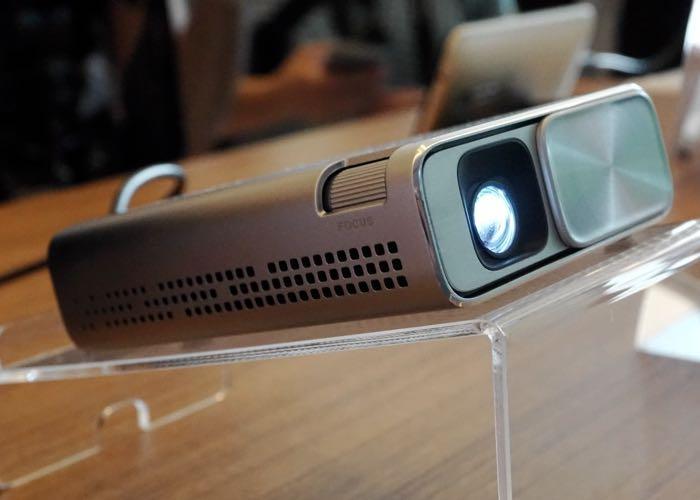
The E1Z is a DLP projector with 100 percent NTSC color gamut and full RGB color spectrum support, which should make for vivider video-watching and game-playing experiences than most pico projectors. It’s also rechargeable and can serve as a 6,000mAh charging bank for plugged-in devices. The press release was otherwise light on details, with no mention of brightness specs, availability, or even resolution, but Asus representatives told Engadget that the price is likely to land around the $200 mark.
So how does the E1z stack up against its diminutive competitors? It’s not nearly as fully featured as the ZTE SPro 2, which packs Wi-Fi, LTE, Bluetooth, a 4-inch 800 x 480 pixel capacitive touchscreen, access to Google Play, and a 5,000mAh battery. The TouchJet Pond, a more recent entrant in the pico projector space, meanwhile displays an 80-inch 854 x 480 image on any surface, lets you draw on the projection with infrared styluses, and sports Wi-Fi, a MicroSD card slot, audio output, and a USB OTG port. However the extra features come at a premium — the SPro 2 and Touchjet Pond retail for $400 and $600, respectively.
Assuming Asus’ projector lands at the aforementioned price point of $200, the E1Z looks to be an affordable, unapologetically uncomplicated projector for the traveling family. It may not manage to measure up against similarly-priced offerings like Lenovo’s $200 Pocket Projector, which features dual speakers, but it’ll hardly be the worst option among the many, many pico projectors out there.


